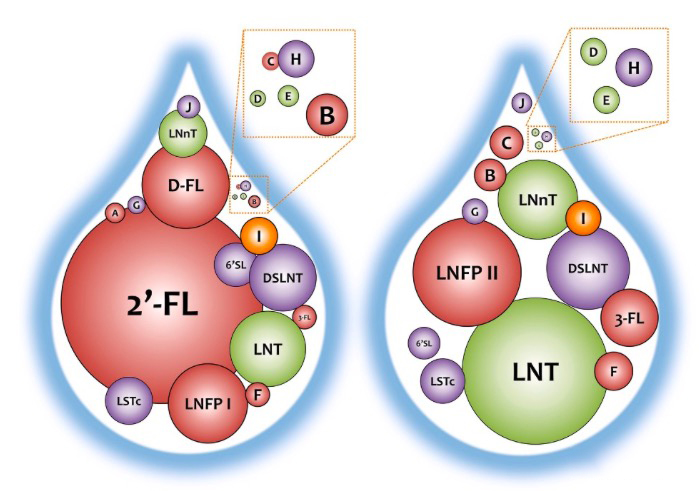- 525
- HENGLU NEWS
Human milk oligosaccharides (HMOs) are complex carbohydrates that are naturally found in human breast milk. Human milk oligosaccharides are synthesized in the mammary glands during lactation. Human milk oligosaccharides are the third most abundant solid component of human milk after lactose and fats, and human milk oligosaccharides play a crucial role in infant health by promoting beneficial gut bacteria and supporting the immune system.
Human milk oligosaccharides are unique to human milk, with over 100 different types identified. Their composition and abundance can vary between mothers and during different stages of lactation.
Research shows that there are distinct differences in the composition of human milk between East Asians and people from Europe and North America. Compared to Europeans and North Americans, East Asians have much higher levels of LNT (lacto-N-tetraose) in their breast milk.

During the first week after childbirth, the LNT levels in the breast milk of mothers in both East Asia and Europe/North America remain high. Due to genetic differences, as well as variations in diet and living environments between East and West, LNT levels in European and North American breast milk drop sharply in the following weeks, whereas in East Asia, they decline slowly and remain at a relatively high level.
A study by the Microbiology Department of the National University of Ireland pointed out that in addition to individual differences such as the number of pregnancies and maternal body weight, geographic location and regional environment are also key factors contributing to significant variations in the composition of HMOs (human milk oligosaccharides, of which LNT is a type) in breast milk. The department's research on "Methods for Defining Human Milk Oligosaccharides" also confirmed that differences in breast milk composition may be a result of evolutionary adaptations in different continental populations.




